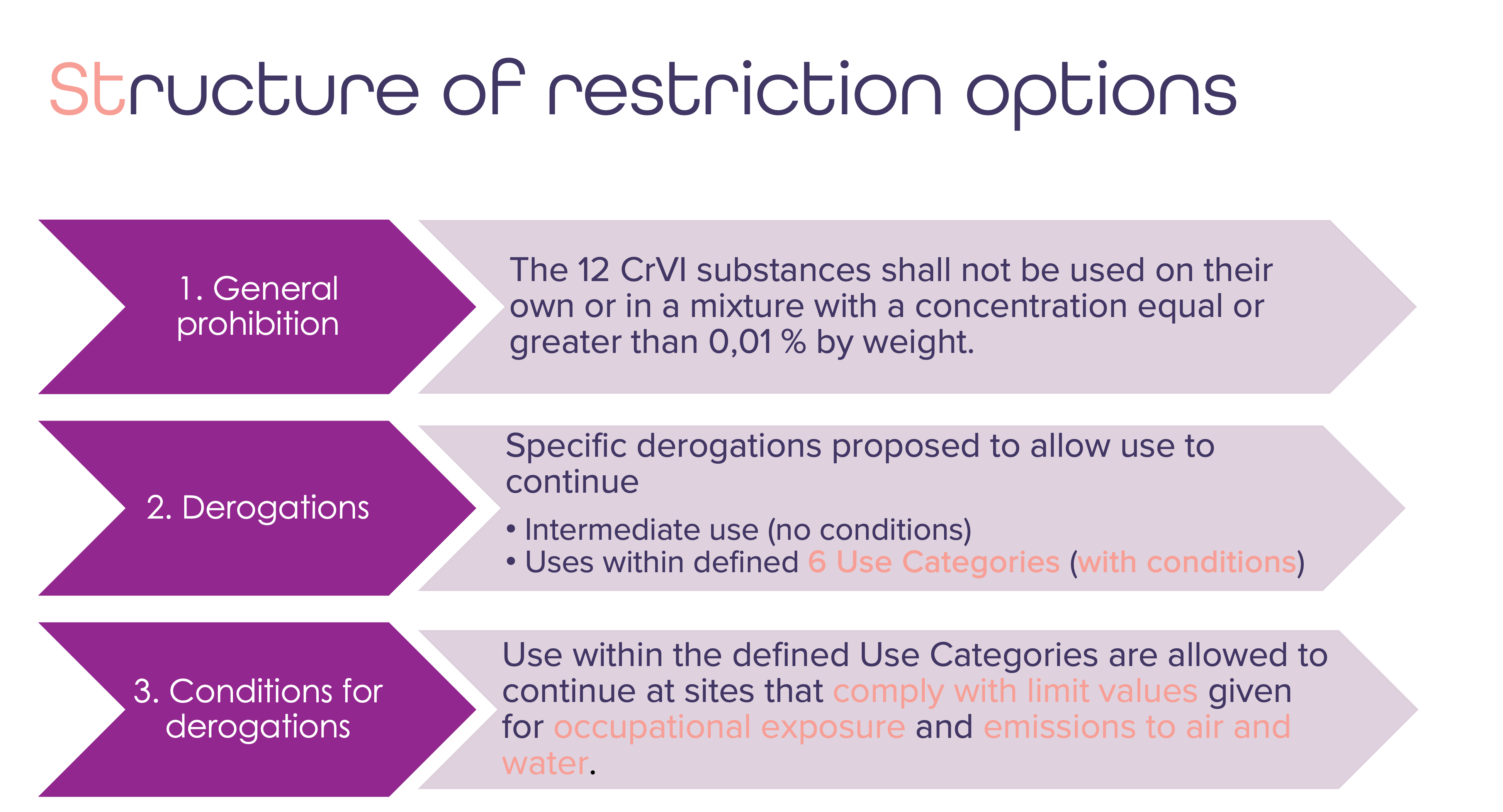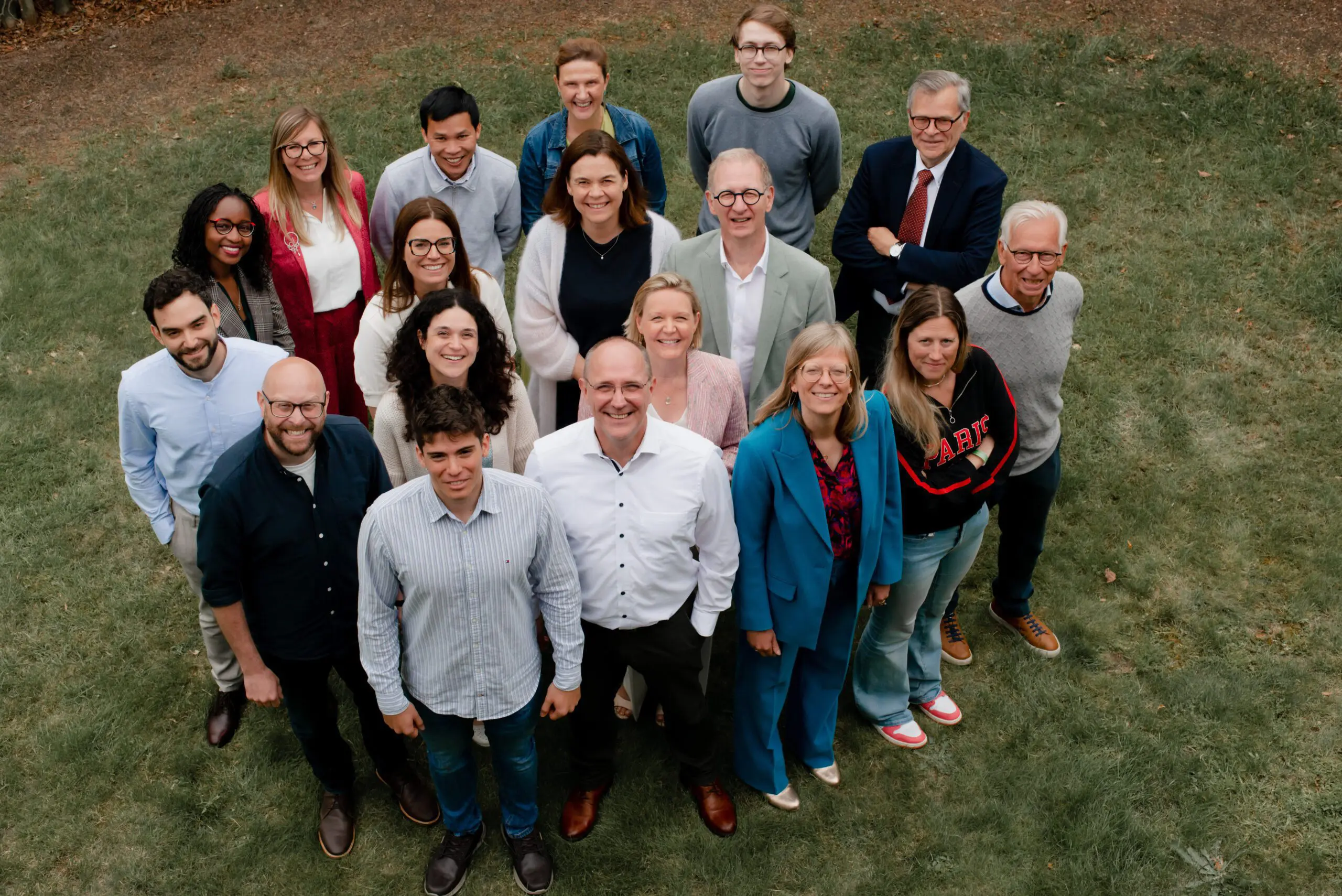ECHA Cr(VI) REACH restriction proposal published 30 April 2025!
Do you need support with the public consultation on the Cr(VI) REACH restriction proposal?
Are you a user of Cr(VI) for chrome plating or surface treatments? Is the supply of chrome plated components or Cr(VI) based surface treatments critical for your value chain?
If yes, you will need to follow the ECHA Cr(VI) restriction very carefully to determine the impact on your business.
Background: ECHA received a mandate from the EU Commission in 2023 to prepare a restriction proposal specifically to address the risks from uses of Cr(VI) and to encourage substitution. The scope was initially limited to chromium trioxide and chromic acid but was later expanded to cover 12 Cr(VI) compounds. Once the restriction is adopted, the Commission intends to de-list these chemicals from the REACH authorisation list, i.e. use will no longer be subject to the authorisation requirement. This means that supply and use of these Cr(VI) compounds will depend on the scope of the restriction adopted and the timing of any derogations from the entry into force.
What are the recommended restriction options recommended by ECHA?
ECHA made a pre-public consultation version available on its website on 30th April. The recommended restriction option is ban on use of the 12 listed Cr(VI) compounds with derogations possible for intermediate uses (without conditions) and use cases within 6 defined use categories (with conditions).
The conditions of the derogations require the sites of use of use to comply with limit values for occupation exposure and emissions to air and water. The values depend on the use category with higher limit values given for formulation uses and chrome plating on metal substrate uses.


More information on the restriction is available on the ECHA website.
Support with the public consultation
The public consultation on the restriction proposal will be launched 18 June 2025
The public consultation will run for 6 months and is intended to collect input from all concerned stakeholders. The input can be on scientific or technical aspects, socio-economic impacts, implementation and enforceability and the scope of the proposed restriction.
What actions do you need to take?
You will need to determine if your specific use case is covered by the 6 listed use categories, and if yes, determine if the site of use can comply with the exposure and emission limit values given for the use category. If your specific use case is not covered, you will need to submit detailed information to support that it needs to be covered! If your site cannot with the limit values recommended, you will need to submit information to support your request for a revised limit value for your use case!
Timeliness is crucial!
The window for submitting information is short, and you should aim to provide detailed input as early as possible in the process. This is because the ECHA committee evaluations run concurrently with the public consultation, and the Socio-Economic Analysis Committee is required to deliver a draft opinion within 10 months of the consultation’s launch.
It is critical to submit impactful comments – i.e information that will be taken into account in the opinion making process.
Apeiron-Team can support you at every step in the process!
– from an analysis of the restriction options ECHA has proposed specifically for your business and value chain to assisting you submit impactful comments in the public consultation!
For more information, see our REACH restriction support services!
Reach out to our experts for more details at Info@apeiron-team.eu
Similar stories
REACH authorisation must encourage safe and sustainable alternatives to the use of Cr(VI) for electroplating chrome!
Like the sound of Apeiron?
We'd love to know more about you! We are always looking for people who are driven by passion.



